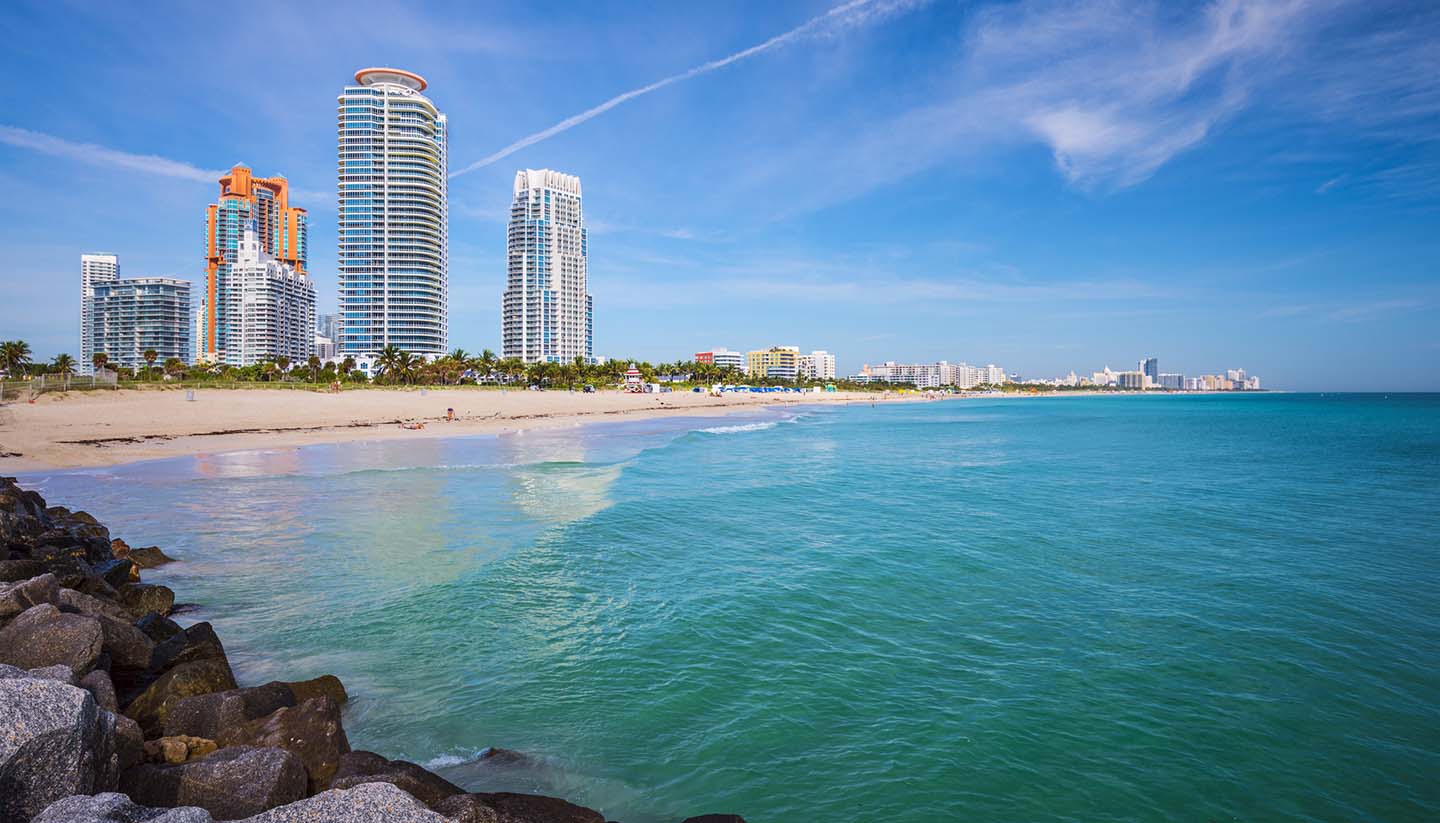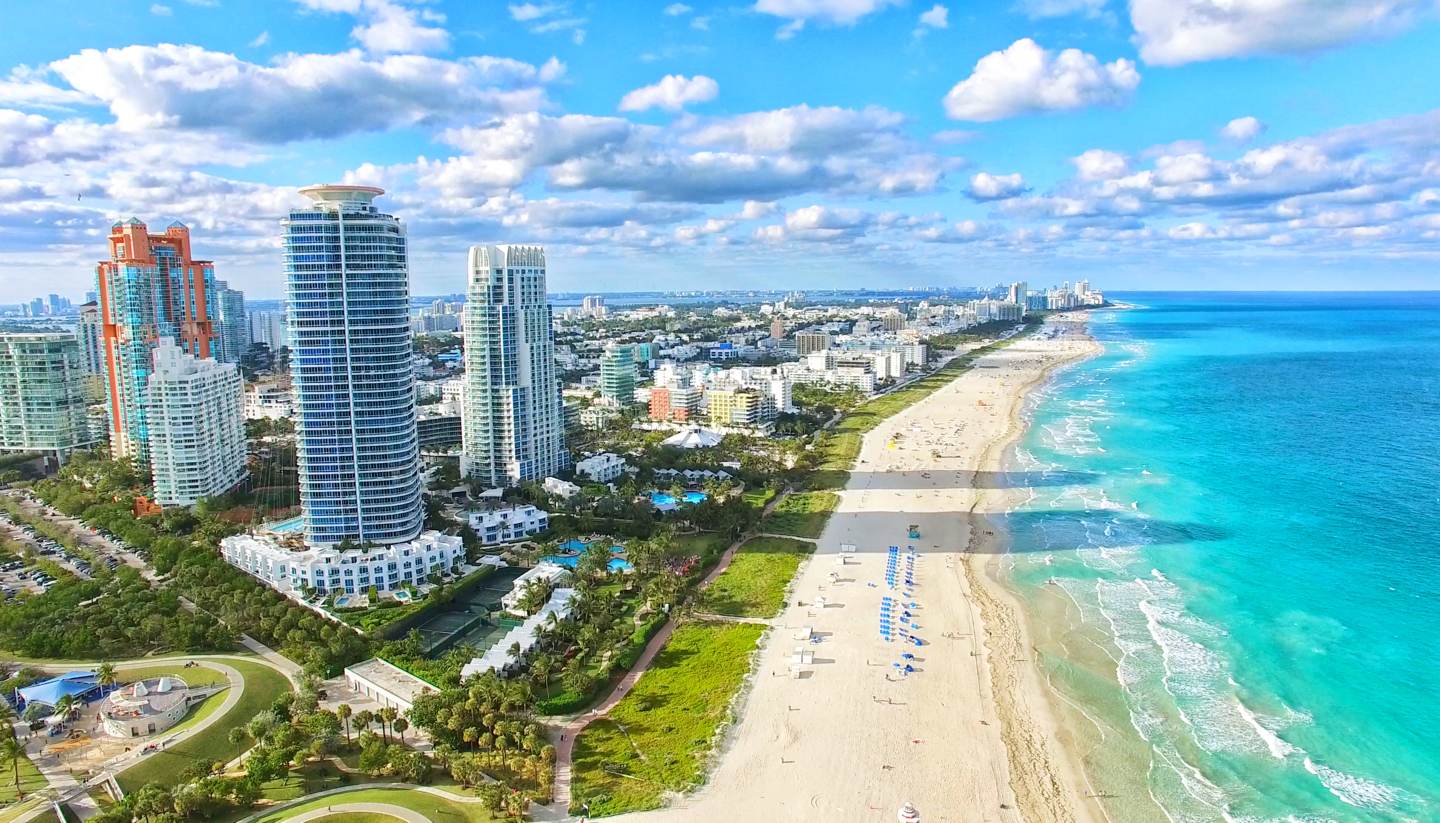Miami History
Miami's history dates back around 10,000 years when Native American settlers lived on the banks of the Miami River.
When the first Europeans arrived, sailing into Biscayne Bay from Spain in the 1500s, the area was populated by Tequesta Indians. The region’s geographic location would attract swathes of settlers from different continents over the next 300 years.
The US gained possession of Florida in the 1800s and to help make land available to settlers, they passed treaties and created reservations to remove the Native Americans. Years of resistance from the Seminoles followed.
The development of steam power in the 19th century led tycoon Henry Flagler to build a railroad in Miami that would carry citrus fruits from the frost-free south.
As additional land for agriculture, tourism and homes followed, so did roads, bridges and airfields. A real estate boom in the 1920s brought thousands to the area as cities, tourist resorts and skyscrapers sprung up. The population continued to grow throughout the Great Depression, and the military helped to further expand it during the Second World War, as South Florida's mild climate attracted training centres for soldiers.
Post-war, the greatest period of change came in the early 1960s with thousands of refugees fleeing Cuba after Fidel Castro seized power. In 1965 alone, 100,000 Cubans fled from Havana to Miami. Most exiles settled into the Riverside neighbourhood, which became known as “Little Havana", a predominantly Spanish-speaking community.
In the 1980s, Miami’s growth was spurred on by the cocaine trade as the city became a hub for narcotics from South America. Money from drugs transformed parts of the city with the rise of swanky properties and nightclubs, but most of it was underpinned by violent crime.
By 2010, Downtown Miami was transformed by a high-rise building boom, which put the city just behind New York and Chicago for its skyscraper-dotted skyline.
Did you know?
• Suntan lotion was invented by Miami’s Benjamin Green, an airman and later a pharmacist, in the 1940s to help protect WWII soldiers stationed in the South Pacific from the sun.
• Miami remains the only major US city to be founded by a woman - Julia Tuttle.
• There are over 800 Art Deco buildings from the 1930s and 40s in Miami’s South Beach – the highest concentration of Art Deco architecture in the world.



